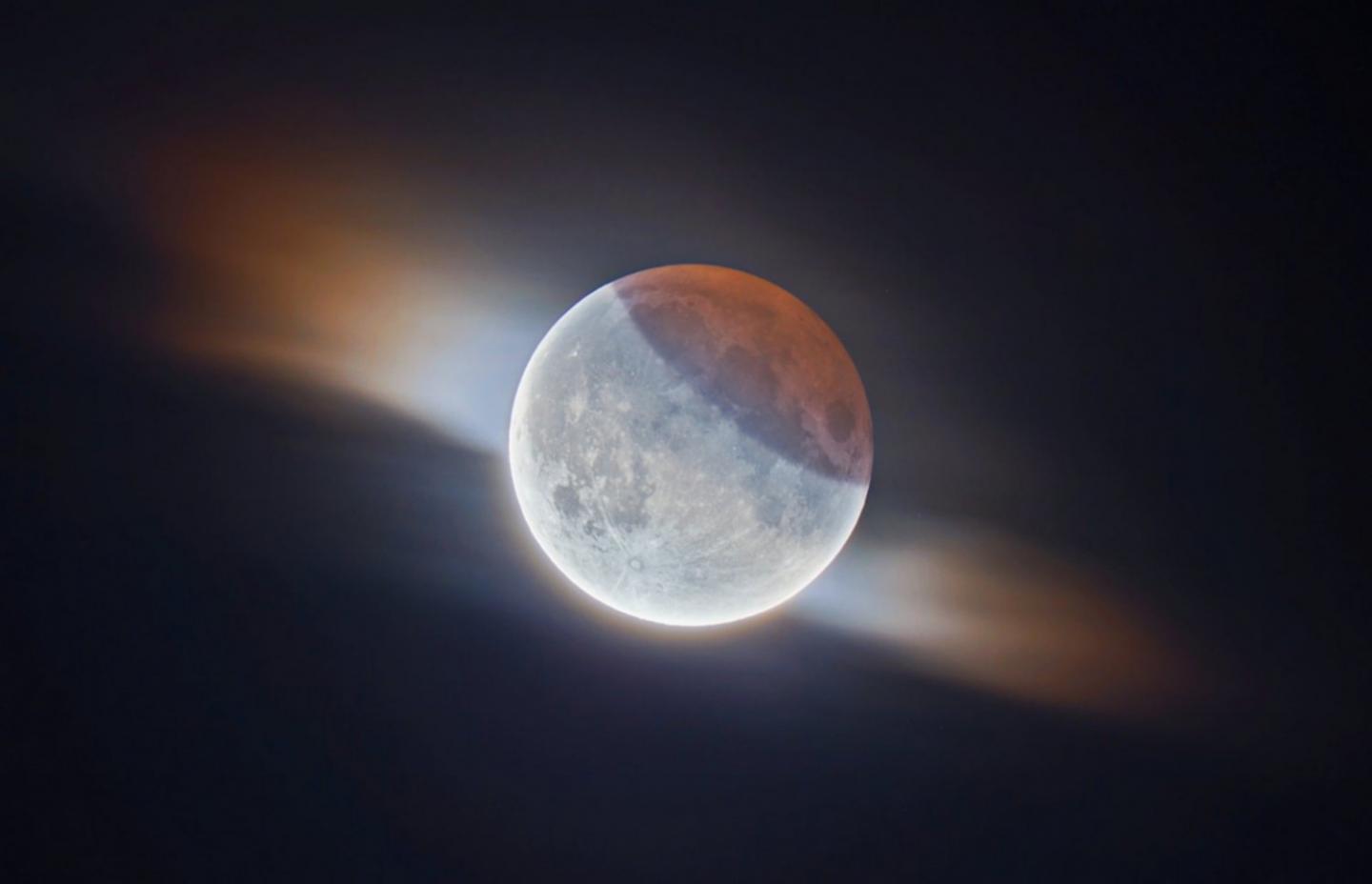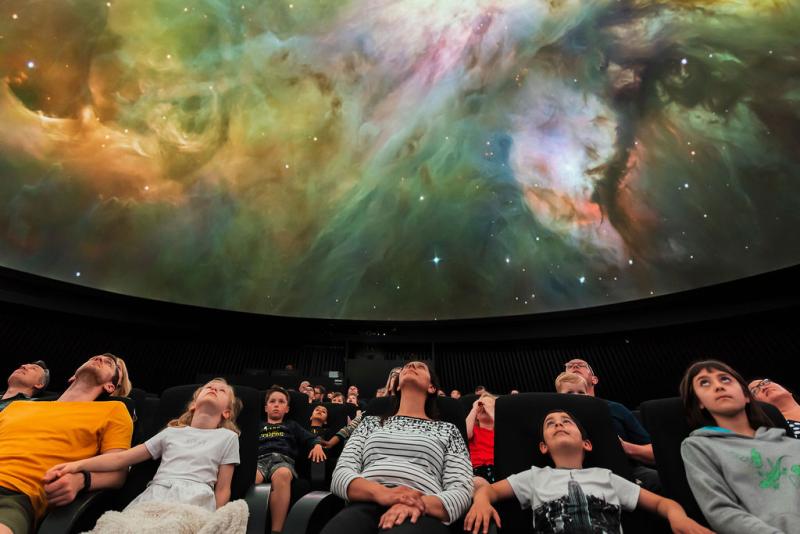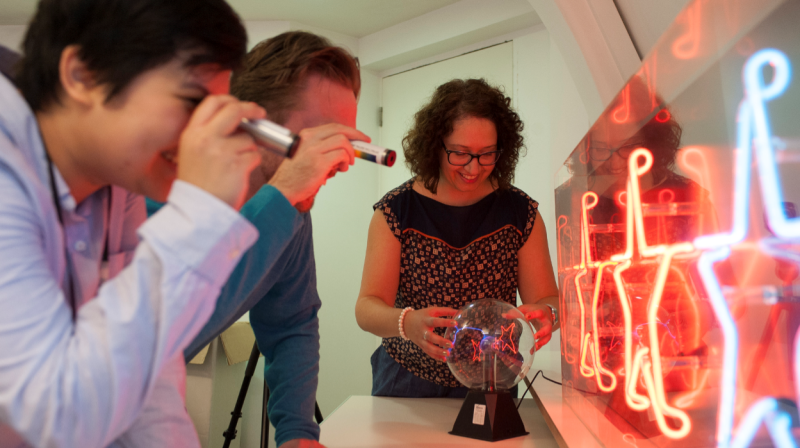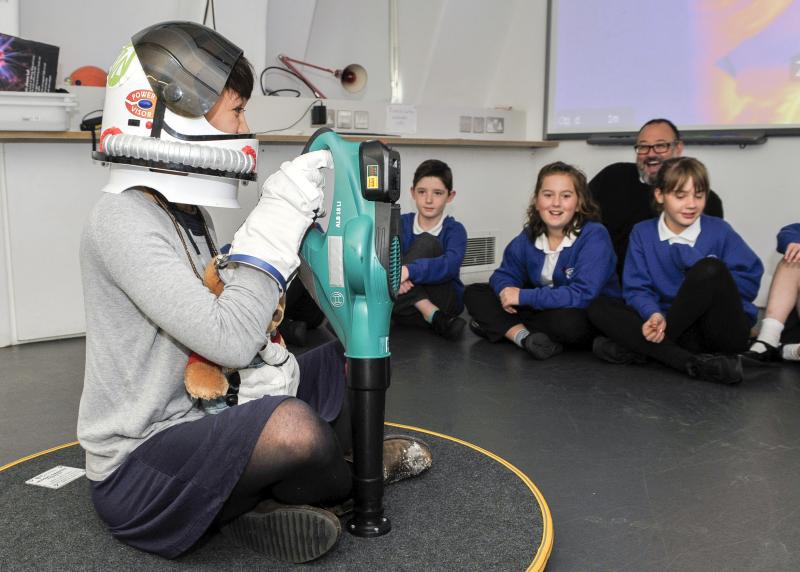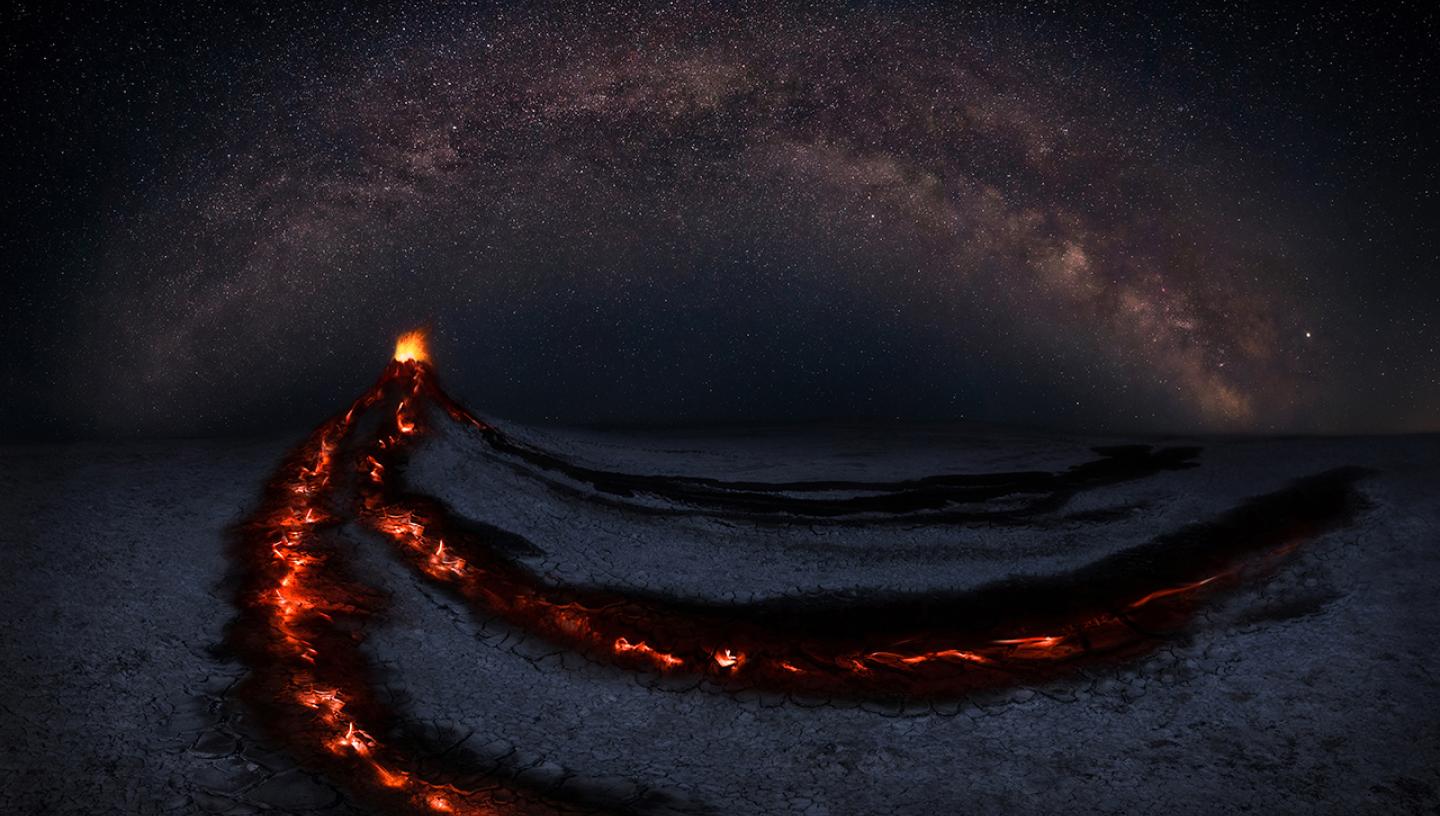
Discover what to see in the night sky in October 2021, including two meteor showers and the Andromeda galaxy.
Top 3 things to see in the night sky in October
- Throughout the month - Spot the Andromeda galaxy, the closest large spiral galaxy to our own Milky Way
- 8/9 October - It's the peak of the Draconids meteor shower
- 21/22 October - The second meteor shower of the month, the Orionids, peaks
(Details given are for London and may vary for other parts of the UK)
Look Up! Podcast
Subscribe and listen to the Royal Observatory Greenwich's podcast Look Up! As well as taking you through what to see in the night sky each month, Royal Observatory Greenwich astronomers pick a topic to talk about.
For October, they're talking about the discovery of white dwarf stars that are burning hydrogen on their surfaces and they're chatting about how astronomers may have discovered a new type of supernova.
Have a listen below, then vote for your favourite story from this episode on our Twitter poll (@ROGAstronomers) during the first week of October.
Our podcast is available on iTunes and SoundCloud
Astronomy in October 2021: key events and what to see
Throughout the month: the Andromeda galaxy
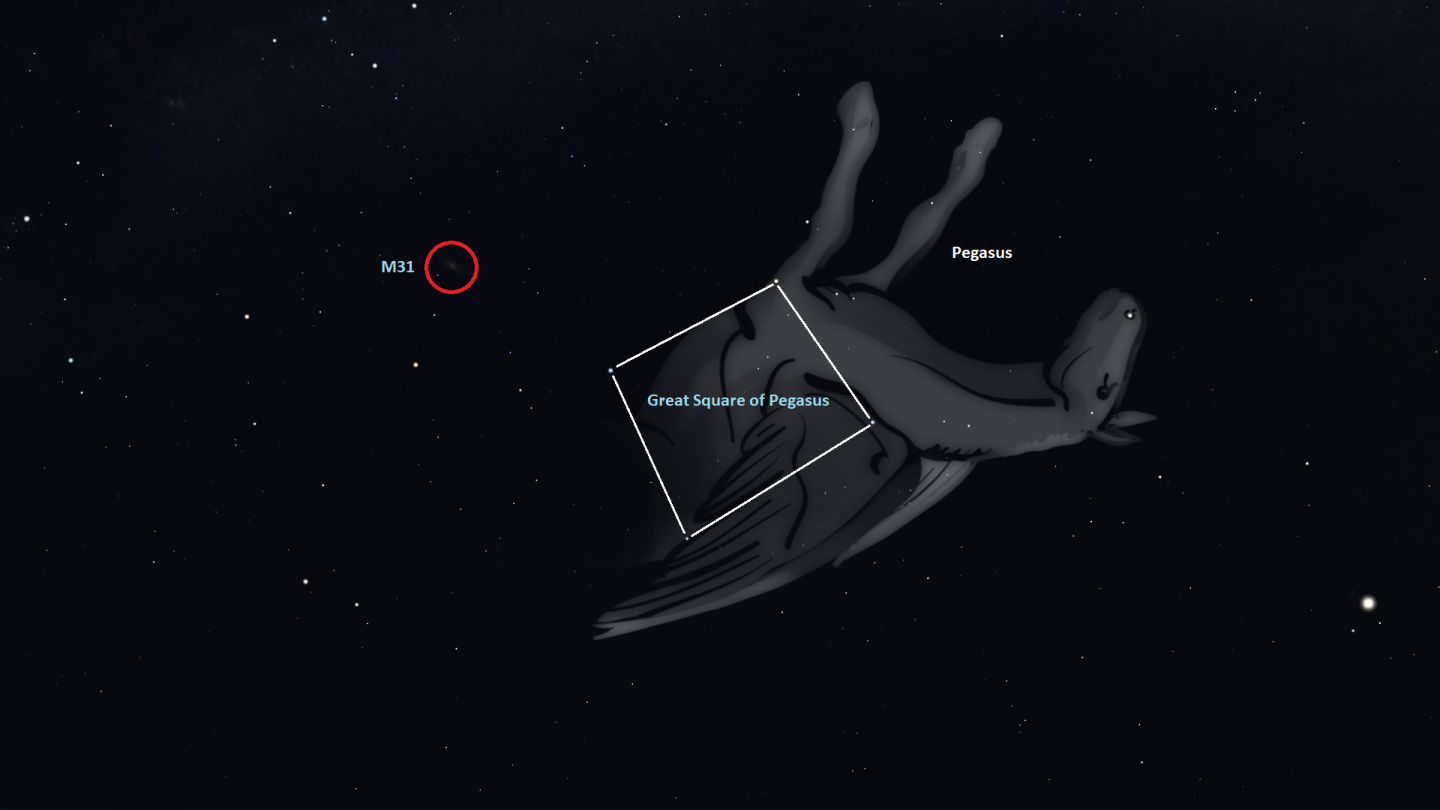
If you look up at the eastern sky at nightfall right at the beginning of the month, you might be lucky enough to spot the closest large spiral galaxy to our own Milky Way – M31, the Andromeda Galaxy. It’s a spiral galaxy containing as many as a trillion stars that is a mind blowing 2.5 million light years distant from our home. Though it is easier with binoculars, you may be able to spot it with unaided eyes as a faint misty patch that is a short distance from the band of the Milky Way just above the famous asterism of the Great Square of Pegasus.
Although you won’t be able to make out any of the individual stars within it, with binoculars the characteristic oval appearance of the galaxy will be visible. It is interesting to know that it was first labeled in the star charts under the name of ‘Little Cloud’ based upon the earliest recorded description of the galaxy made by a Persian Astronomer in 964 AD, Abd al-Rahman al-Sufi. See if you can spot that little cloud in the night sky this month.
8/9 October: the peak of the Draconids meteor shower
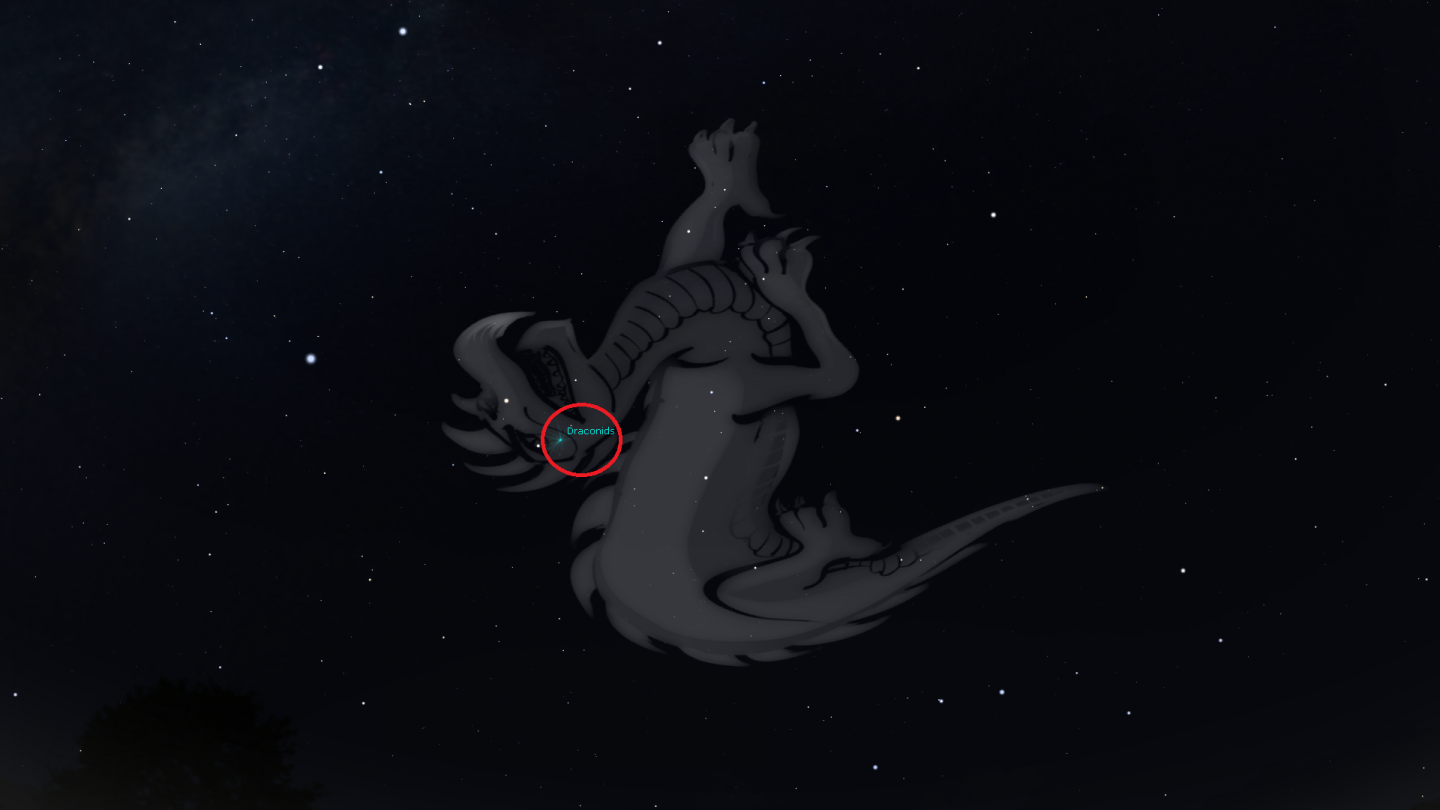
October marks the beginning of meteor season, with the final three months of the year bringing us a whopping 6 separate meteor showers! First up we will have the Draconids, observable from the early evening of October 7th until the 11th. This is a great meteor shower for families as it is typically best seen in the evening, unlike most which peak in the wee hours of the morning – not exactly school-or-work friendly! Even luckier, this year the Draconids almost coincide with the new moon, meaning the skies will be nice and dark for some evening meteor viewing.
As with all meteor showers, the Draconids get their name from the location of their radiant: the constellation of Draco, the dragon, near its two ‘eyes’ of Eltanin and Rastaban. In addition to being one of the few constellations where the stick art actually resembles the thing itself, Draco has many deep-sky delights in the folds of its tail including the spectacular NGC 6543, better known as the Cat's Eye Nebula and the spiral galaxies NGC 5907 and NGC 5879. It’s worth noting though that the meteors could appear from anywhere in the night sky, so we suggest going along with a friend, and perhaps playing a game – the first one to spot a meteor shouts “meteor”, and we’ll leave the prize up to you!
21/22 October: the Orionids meteor shower peaks
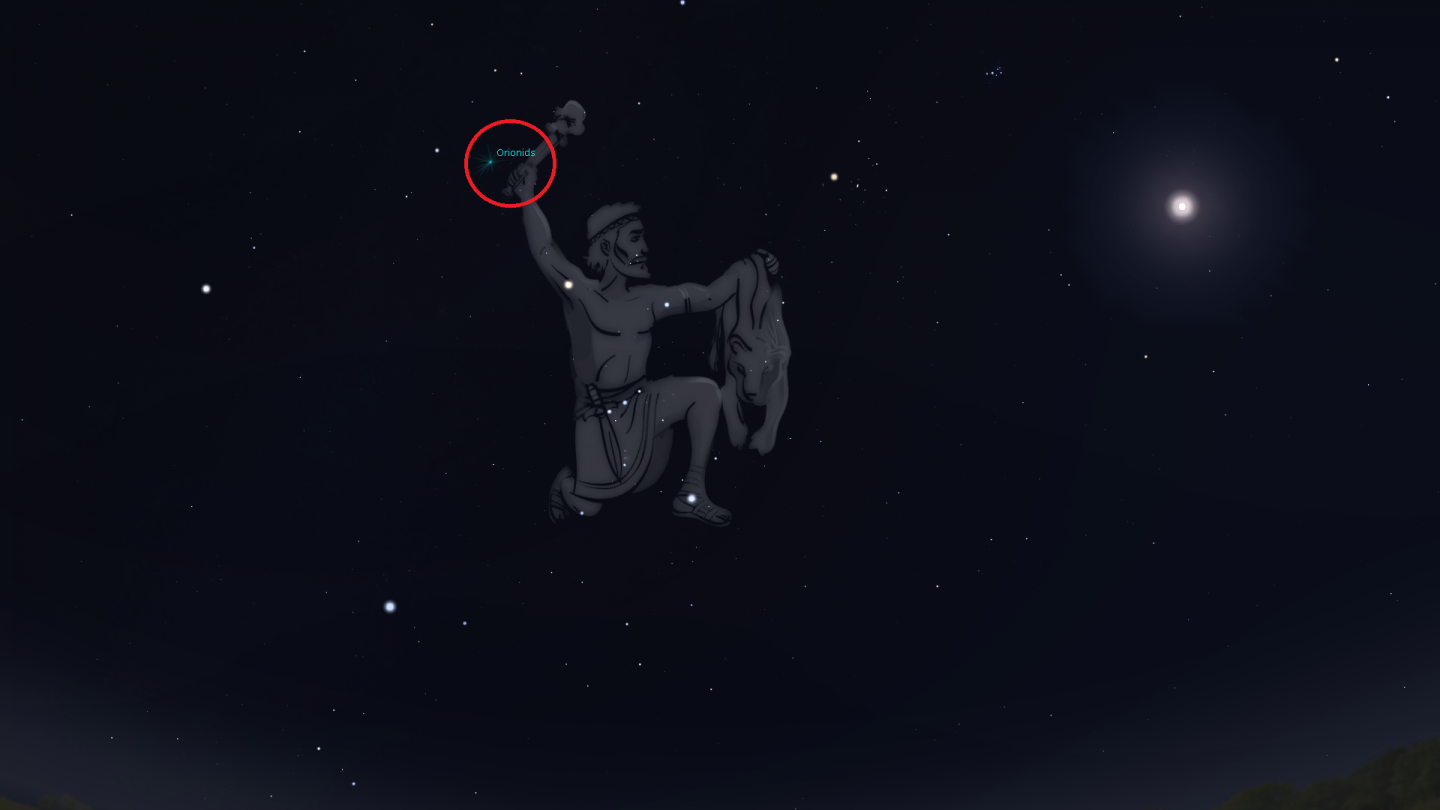
But where do these meteors come from? Almost all meteor showers occur as the Earth passes through the debris left behind by comets as they make their way around the Sun. Some of this debris will then fall through the Earth’s atmosphere, heating up and glowing as it does. This debris doesn’t even need to be large – specks as small as a grain of sand can produce spectacular streaks across the sky. While the Draconids come from the debris of comet 21P/Giacobini-Zinner, the second meteor shower of the month has an altogether more famous originator: Halley’s comet.
The Orionids meteor shower is expected to peak around the 21st / 22nd of October, with the radiant of the shower lying in the constellation of Orion. You’ll have to stay up a little later for this one, as Orion will not even rise until almost 11pm, and the peak won’t be until after midnight. With around 20 meteors per hour expected, there will be plenty of meteors shooting through the sky, but do be warned that the almost full moon will wash many of them out. For your best chance of seeing meteors take a look just before dawn.
End-October: Venus is in the evening sky
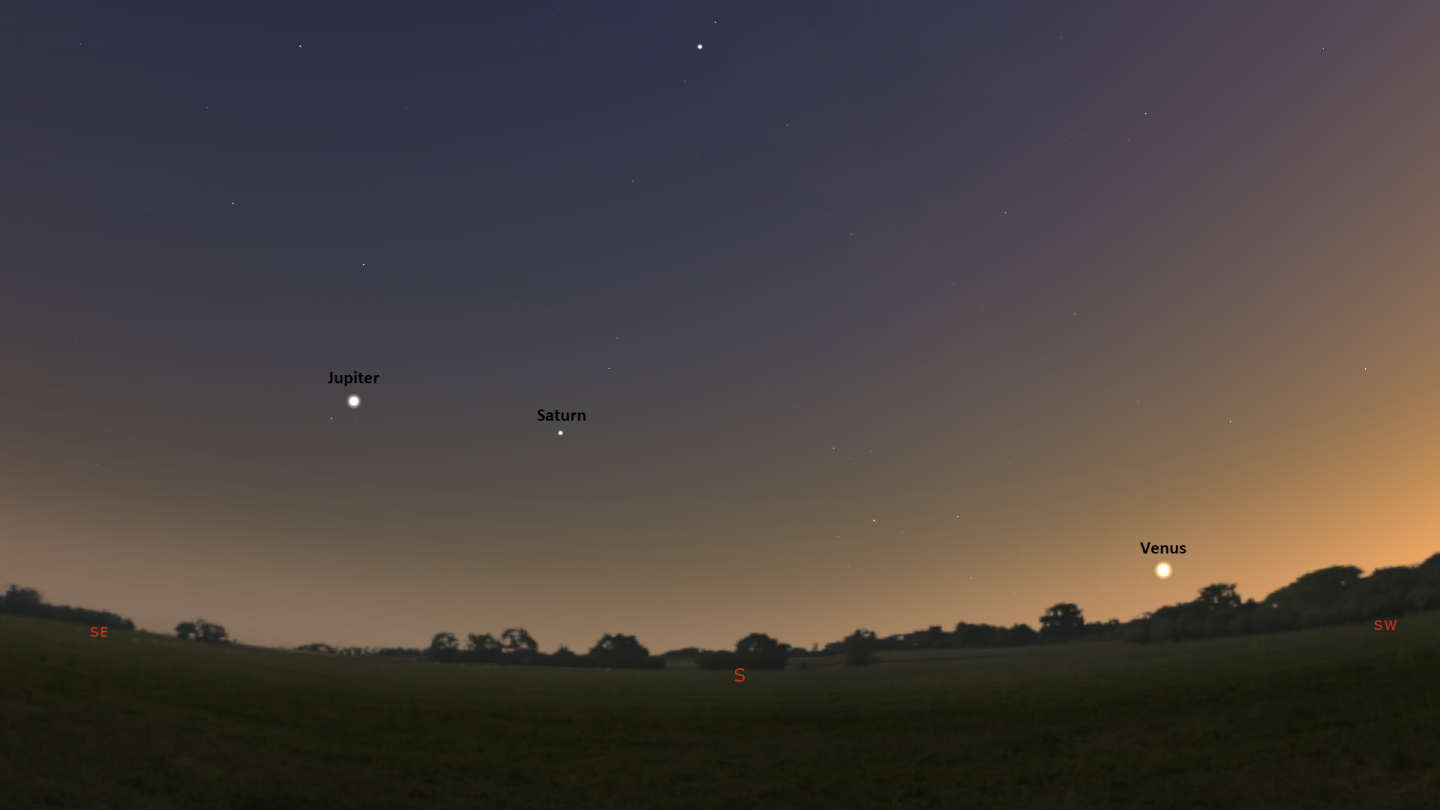
Another observation to look forward to is the second brightest natural object in the night sky after the moon… you guessed it, it’s good old planet Venus. Venus was named after the Roman goddess of love and beauty due to its mesmerising illumination in the night sky. Throughout the years many different cultures have studied its motion, from Ancient Greek astronomers realising that the ‘morning star’ and ‘evening star’ were actually one object that was visible at different times, to Islamic scientists calculating and refining its motion, to Galileo Galilei recording its apparent ‘phases’ to support the heliocentric model of the Solar System.
Late in October Venus will start to become visible in the western part of the evening sky just after sunset. With the thick clouds of its atmosphere reflecting over two-thirds of the sunlight hitting its surface, it’s no surprise Venus was thought to be a star. However, if you were to take a peek at it through a telescope, you would see it appearing as a definite disk, rather than as a point of light like the stars do.
Southern Hemisphere: Throughout the month - Sirius, the Dog Star
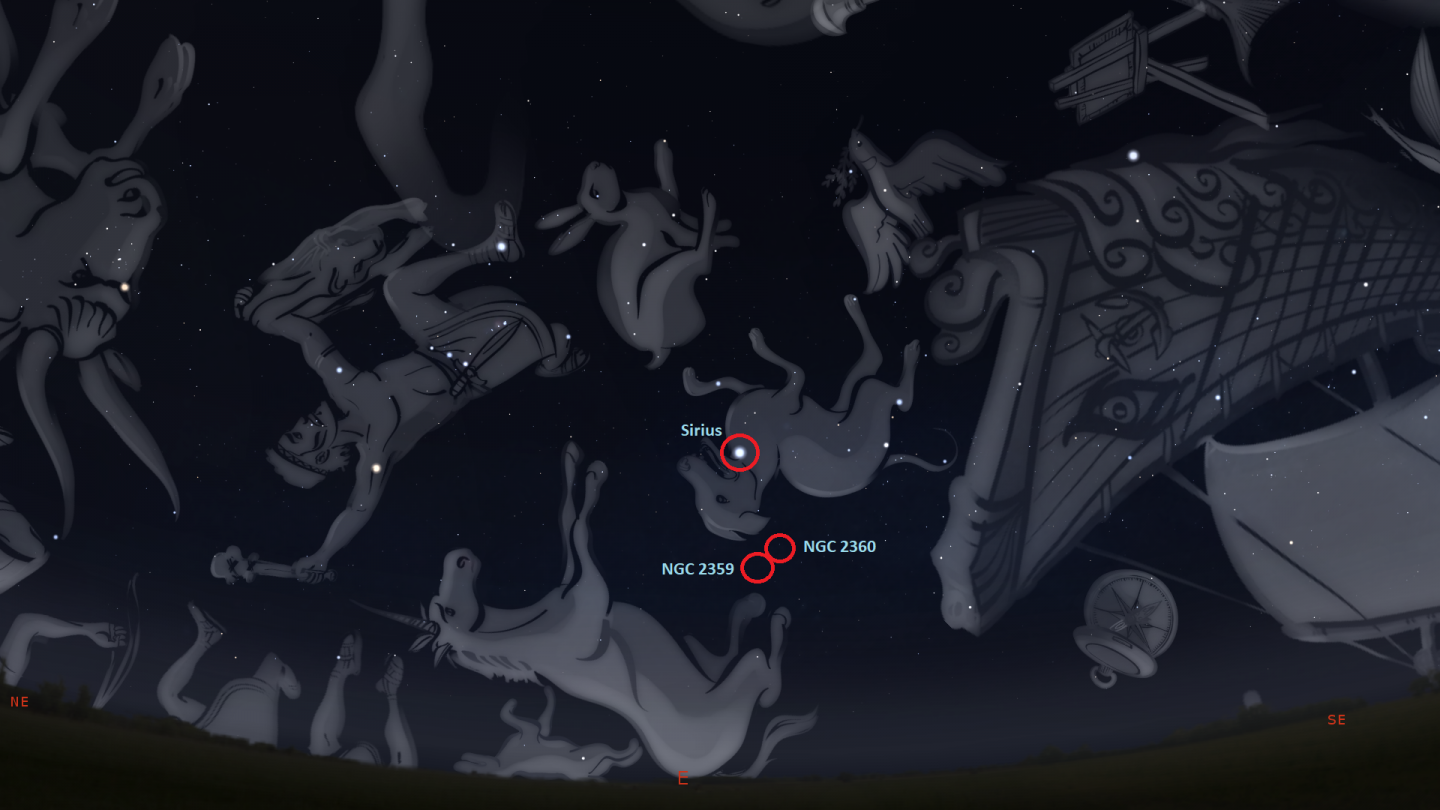
For those of you who are enjoying a view of the sky from the Southern Hemisphere: look towards the East in the early twilight hours at the beginning of the month to spot the brightest star in the night sky, the star Sirius. Despite its bright appearance it isn’t even close to being the largest star in its constellation, being surrounded by hypergiants, including one of the largest stars ever discovered, VY Canis Majoris.
There are also a number of open clusters, including Caroline’s Cluster, NGC 2360, named after Caroline Herschel, the first woman in England to receive a salary as a scientist. If nebulae are more your style, see if you can spot NGC 2359, also known as Thor’s Helmet because of its distinctive shape, this object is a beautiful emission nebula over 10,000 light years away.
The Moon's phases this month
- 6 October: new moon (12:05 am)
- 13 October: first quarter moon (4:25 am)
- 20 October: full moon (3:57 pm)
- 28 October: last quarter moon (9:05 pm)
'HDR Partial Lunar Eclipse With Clouds © Ethan Roberts' was one of the runner-up images from the 2020 Insight Investment Astronomy Photographer of the Year competition. See the winning and shortlisted images from 2021's Astronomy Photographer of the Year competition in a new exhibition at the National Maritime Museum.
Stargazing Tips
- When looking at faint objects such as stars, nebulae, the Milky Way and other galaxies it is important to allow your eyes to adapt to the dark – so that you can achieve better night vision.
- Allow 15 minutes for your eyes to become sensitive in the dark and remember not to look at your mobile phone or any other bright device when stargazing.
- If you're using a star app on your phone, switch on the red night vision mode.
Need a stargazing telescope or binoculars? Check out our range of high quality observing equipment recommended by Royal Observatory Greenwich astronomers.
See our range of observing equipment
Share your pictures
This month's banner image is 'Eruption' taken by Elena Pakhalyuk and it is one of the shortlisted images from the Insight Investment Astronomy Photographer of the Year competition 2020.
Do you have any images of the night sky? If so, why not share your photos via our Royal Observatory Astrophotography Facebook group.
You can also connect with us via Twitter: @ROGAstronomers
Subscribe to our YouTube channel and join us on a journey through time and space as we explore our Universe.
Planetarium Shows
Join us for live planetarium shows presented by astronomers from the Royal Observatory Greenwich
Observatory Online
In our Observatory Online video series, our astronomers explore different topics in Astronomy and Space Exploration. You can find these videos, and more, on our YouTube channel.
Resources for teachers and students
The Royal Observatory Greenwich's learning team has also created:
- Free animated videos that answer the biggest questions in astronomy and free resources to go alongside them.
- A whole host of podcasts featuring interviews with real space scientists, astronauts and active researchers working in UK universities.
- A 'learning at home' hub which contains a suite of resources for you to use at home.
